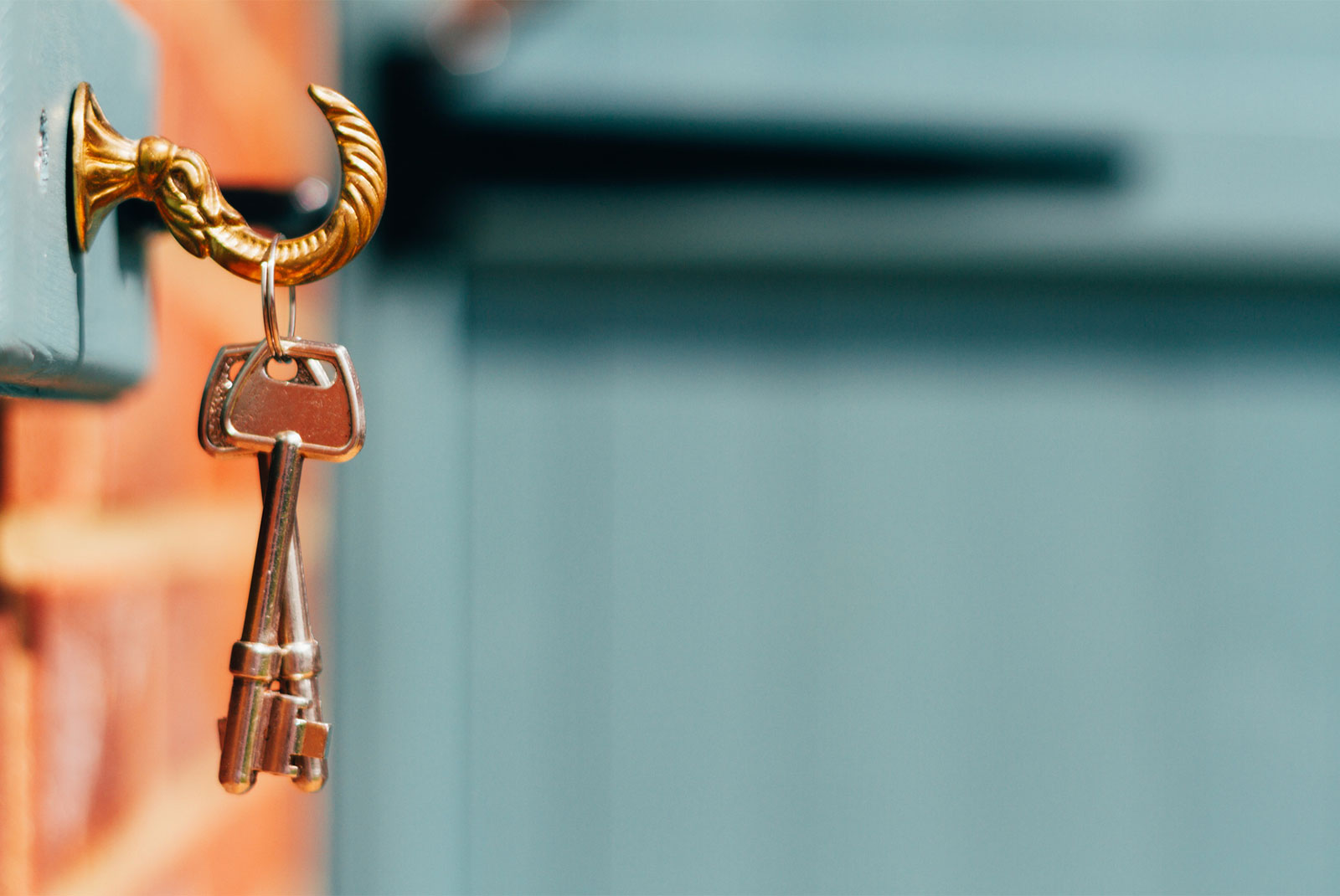Ready To Buy a Home?
Get Approved to Buy a Home
Rocket Mortgage® lets you get to house hunting sooner.
When you buy a house, you’re usually asked to make a down payment, or a sum of money paid upfront to purchase a home. The down payment is typically combined with a mortgage to finance the purchase of a property.
Conventional mortgages and conventional wisdom both suggest that buyers are expected to pay at least 20% of the purchase price as a down payment, but that can be a tall order.
Fortunately, there are ways to buy a house with little to no money down.
This article explores how to buy a house with no money down, how to buy a house with a low down payment and how to determine the best option for your financial situation and goals.
What Is the Purpose of a Down Payment?
Explore Your Mortgage Options
What are you looking to do?
The purpose of a down payment is to ensure the home buyer has some skin in the game and protect the lender in case the borrower defaults on the loan. A down payment also allows you to build equity in your new home from the start, so you aren’t underwater on your mortgage after closing.
What is the impact of a low down payment?
A low down payment has three crucial impacts on your mortgage.
- Interest rates: The best interest rates are captured by borrowers who make the standard 20% down payment. If you put down less than this amount, you may be charged a higher interest rate by your lender.
- Mortgage insurance: Making a down payment below 20% typically means you’ll need to pay for private mortgage insurance (PMI). PMI protects the lender in case you default on your loan, but it’s an added monthly cost that doesn’t build equity in your home.
- Cost of ownership: Between higher interest rates and a PMI requirement, buying a house with no money down can add to the cost of ownership over the life of the loan.
Need Mortgage Help?
New home, second home, refinancing, we’ve seen it all. Whatever your goals, expert help is just a click away.
Can You Buy a House With No Money Down?
You can buy a house with no money down if you qualify for a mortgage that doesn’t require a down payment. The most common type of no-down payment mortgage are government-backed loans. In particular, the U.S. Department of Veterans Affairs (VA) and the U.S. Department of Agriculture (USDA) both offer no-money down home loans.
With government-backed mortgages, if the borrower defaults, the federal government steps in to ensure the lender is repaid. This makes lenders more willing to issue these no-down payment loans.
VA loans
Through the VA loan program, veterans, active service members and their surviving spouses can apply for a home loan with no money down.
- Minimum down payment: Borrowers can put 0% down as long as the down payment doesn’t exceed their VA entitlement.
- Who qualifies: Eligible veterans, service members and surviving spouses can qualify for VA loans.
- Minimum credit score: The VA doesn’t have a minimum credit score requirement. However, individual lenders may set their own underwriting guidelines.
- Required mortgage insurance or fees: VA loans may require a funding fee equal to 1.4% – 2.3% of the loan amount the first time you use one and 1.4% – 3.6% of the loan amount every time after that. This can be paid upfront or added to the mortgage loan.[1]
- Income limits/requirements: Be prepared to provide a breakdown of your finances, including a review of your debt-to-income (DTI) ratio. Your DTI ratio is what you owe each month (gross monthly debt) divided by your gross monthly income. For VA loans, the preferred DTI tends to be 41% or lower.[2]
USDA loans
If you want to build, buy, repair or renovate a home outside of a city, the USDA offers no- and low-down payment home loans. Borrowers generally need to purchase a home within areas identified by the USDA as rural – though there are some exceptions in economically underdeveloped areas. Borrowers may also present a need for economic assistance to qualify for a USDA loan.
- Minimum down payment: Borrowers can put 0% down.
- Who qualifies: Home buyers purchasing a home in a designated rural area may qualify.
- Minimum credit score: The USDA doesn’t specify a minimum credit score, but most lenders prefer a credit score of 640 or higher.
- Required mortgage insurance or fees: USDA loans require an upfront fee equal to 1% of the loan amount. This can be paid upfront or added to the mortgage loan. A mortgage insurance premium (MIP) equal to 0.35% of the loan amount is also required each month.[3]
- Income limits/requirements: These loans only apply to primary residences, and your income needs to be less than 115% of the median income in the area where you plan on living.[3]
PROS Pros of a No-Down Payment Mortgage👍
Lowering your upfront costs, like a down payment, can eliminate one of the biggest barriers to purchasing a home.
Interest rates for VA loans and USDA loans can be lower than the interest rates for conventional loans.
CONS Cons of a No-Down Payment Mortgage👎
Loans issued by the VA and USDA are limited to specific borrowers. Veterans, active duty service members and their spouses are eligible for VA loans while the USDA limits its backing to homes purchased in rural areas by individuals within specific income limits.
The government may set higher standards for the properties they are willing to back. For example, VA loans may require an appraisal by a VA-certified home appraiser.
Mortgages With Low Down Payment Requirements
Most mortgages come with a down payment requirement, but some loan types have more flexibility than others.
FHA loans
Loans backed by the Federal Housing Administration (FHA) are designed for borrowers who may not have strong credit or a large down payment. FHA loans require as little as 3.5% down, making them a good option for first-time home buyers or borrowers with limited funds.
- Minimum down payment: Borrowers can put 3.5% down.[4]
- Who qualifies: Anyone can take advantage of FHA loans, but they tend to be used by first-time home buyers and repeat home buyers with income and credit issues.
- Minimum credit score: Borrowers can can have a score of 580, or as low as 500 when you put 10% down.[4]
- Required mortgage insurance or fees: A mortgage insurance premium (MIP) is required.
- Income limits/requirements: Borrowers will need 2 years’ proof of income.
HFA loans
Not to be confused with FHA loans, HFA loans are offered in partnership with Fannie Mae, Freddie Mac and your state’s housing finance agency or authority (HFA). HFAs are state programs that help residents become homeowners through educational programs and loan programs by providing down payment assistance in the form of loans or grants.
These programs can vary from state to state, and the loan options will vary based on where you’re looking to buy.
Minimum down payment: Borrowers can put 3% down, with possible down payment assistance.[5]
Who qualifies: First-time and repeat home buyers can qualify.
Minimum credit score: The minimum is 620.
Required mortgage insurance or fees: PMI is required, but it may be canceled after you reach 20% home equity – the percentage of the home you own based on the home’s current value.
Income limits/requirements: These vary based on each state’s HFA.
HomeReady® mortgages
The HomeReady® program helps first-time and repeat home buyers with low to moderate incomes buy a home or refinance (aka get a new loan on a property they already own) for as little as 3% down. HomeReady® mortgages can be fixed-rate or adjustable-rate mortgages, and buyers can purchase rental properties.[6]
- Minimum down payment: Borrowers can put 3% down.
- Who qualifies: First-time and repeat home buyers can qualify.
- Minimum credit score: The minimum is 620.
- Required mortgage insurance or fees: PMI is required, but it may be reduced after 90% of the loan is paid off or canceled after 20% home equity is reached.
- Income Limits/Requirements: If the borrower or one of the borrowers is a first-time home buyer, there is no income limit. If neither of the borrowers are first-time buyers, they can’t make more than 80% of the area’s median income. First-time home buyers may also be required to take a homeownership education course.
Home Possible® mortgages
Home Possible® allows both first-time and repeat home buyers to buy a home or refinance their loan to lower their mortgage interest rate with as little as 3% down.[7]
The program has expanded to allow buyers to purchase 1 – 4 units, condos, planned unit developments and manufactured homes with certain restrictions.
Home buyers can buy properties with co-borrowers and buy one non-occupied property they intend to renovate.[7]
- Minimum down payment: Borrowers will need to put 3% down for properties with 2 – 4 units and 5% down for manufactured homes.[7]
- Who qualifies: First-time and repeat home buyers can qualify.
- Minimum credit score: The minimum is 660.
- Required mortgage insurance or fees: PMI is required, but it may be reduced after 90% of the loan is paid off.
- Income limits/requirements: Borrowers can’t make more than 100% of the area’s median income.
HomeOne® mortgages
HomeOne® is designed exclusively for first-time home buyers who are buying a home as a primary residence. These are fixed-rate loans and are only available for 1-unit properties, including condominiums and units in planned unit developments.
Minimum down payment: Qualified borrowers can put 3% down.[8]
Who qualifies: First-time buyers can qualify.
Minimum credit score: There is no minimum credit score, but most lenders prefer a score of 620.
Required mortgage insurance or fees: PMI is required until 20% equity is reached.
Income limits/requirements: There are no income or geographic limits, but first-time home buyers may be required to take a homeownership education course.[8]
Physician loans
Physician loans are available to new doctors, dentists and veterinarians – who are often saddled with expensive student loan debt after graduation. To help them find a home and earn their business, many lenders offer physician loans.
These programs offer conventional mortgage loans with low interest rates, low or no down payments and no mortgage insurance requirements.
These loans are often adjustable-rate mortgages, so the interest rates will change periodically over the life of the loan.
- Minimum down payment: Borrowers can put 0% – 10% down, depending on the lender.
- Who qualifies: New doctors with an M.D. or D.O. degree can qualify. Some lenders offer programs for dentists, orthodontists and veterinarians.
- Minimum credit score: A score of 680 – 700 is preferred, depending on the lender.
- Required mortgage insurance or fees: PMI is not required.
- Income limits/requirements: Borrowers must show proof of an advanced degree in a qualifying field of study.
Good Neighbor Next Door mortgages
The U.S. Department of Housing and Urban Development (HUD) offers a special loan program that allows eligible teachers, law enforcement officers, firefighters and emergency medical technicians to buy a home for up to 50% off and $100 down.[9]
The homes, which are often located in federally designated “revitalization areas,” must be single-family homes and can be purchased with either a conventional, FHA or VA loan.[9]
- Minimum down payment: Borrowers can make a $100 down payment – additional mortgage expenses may apply.
- Who qualifies: Teachers, law enforcement officers, firefighters and EMTs can qualify.
- Minimum credit score: A borrower’s score should be above 580 for maximum financing.[9]
- Required mortgage insurance or fees: A MIP may be required.
- Income limits/requirements: Buyers must keep the home as their primary residence for 3 years.
Conventional loans with PMI requirements
If you don’t qualify for a no-down payment loan, or you’re looking for a lower interest rate, you may still be able to qualify for a conventional loan with a small down payment. Conventional loans typically require a 5% down payment, though some lenders may allow you to put as little as 3% down.
- Minimum down payment: Borrowers can put 3% – 5% down, depending on the lender.
- Who qualifies: First-time and repeat home buyers with strong credit and a small down payment can qualify.
- Minimum credit score: Typically, a score of 620 or higher is preferred.
- Required mortgage insurance or fees: PMI is required if you put less than 20% down.
- Income limits/requirements: Borrowers will need 2 years’ proof of income.
No Money Down, More Money Later
While no-down payment mortgages can be a great way to buy a home, they may not be the best option for everyone. Keep in mind that you’ll still likely have to pay other fees and expenses associated with taking out a mortgage.
You may also want to consider the long-term effects of a low-down payment mortgage, such as PMI and an increased cost of ownership. You may decide it’s better to wait and save up for a larger down payment – or look into down payment assistance grants – so you can avoid these costs.
The Short Version
- Borrowers are often asked to put down at least 20% of the home’s purchase price to get a mortgage, but you can buy a house with as little as no money down
- The most common type of no-down payment mortgage are government-backed loans, but there are low-down payment conventional loan programs available as well
- Paying less upfront can make it easier to buy a home, but it can also make the cost of homeownership more expensive in the long run
U.S. Department of Veterans Affairs. “VA Funding Fee And Loan Closing Costs.” Retrieved November 2022 from https://www.va.gov/housing-assistance/home-loans/funding-fee-and-closing-costs/
U.S. Department of Veterans Affairs. “VA Guaranteed Loan.” Retrieved November 2022 from https://www.benefits.va.gov/BENEFITS/factsheets/homeloans/VA_Guaranteed_Home_Loans.pdf
USDA Rural Development. “Reducing Fees Make Home Loans More Affordable | Rural Development.” Retrieved November 2022 from https://www.rd.usda.gov/newsroom/news-release/usda-rural-development-reducing-fees-make-home-loans-more-affordable
Federal Deposit Insurance Corporation. “203(b) Mortgage Insurance Program.” Retrieved November 2022 from https://www.fdic.gov/consumers/community/mortgagelending/guide/part-1-docs/203b-mortgage-insurance-program.pdf
Fannie Mae. “HFAs & Public Entities.” Retrieved November 2022 from https://singlefamily.fanniemae.com/originating-underwriting/mortgage-products/hfas-public-entities
Fannie Mae. “HomeReady Mortgage.” Retrieved November 2022 from https://singlefamily.fanniemae.com/originating-underwriting/mortgage-products/homeready-mortgage
Federal Deposit Insurance Corporation. “Home Possible®.” Retrieved November 2022 from https://www.fdic.gov/resources/bankers/affordable-mortgage-lending-center/guide/part-1-docs/freddie-home-possible.pdf
Freddie Mac. “HomeOne®.” Retrieved November 2022 from https://sf.freddiemac.com/working-with-us/origination-underwriting/mortgage-products/home-one
Federal Deposit Insurance Corporation. “Good Neighbor Next Door.” Retrieved November 2022 from https://www.fdic.gov/resources/bankers/affordable-mortgage-lending-center/guide/part-1-docs/good-neighbor-next-door.pdf
Freddie Mac. “HomeOne®.” Retrieved December 2021 from https://sf.freddiemac.com/working-with-us/origination-underwriting/mortgage-products/home-one
Freddie Mac. “Home Possible®.” Retrieved December 2021 from https://sf.freddiemac.com/working-with-us/origination-underwriting/mortgage-products/home-possible
Fannie Mae. “HFAs & Public Entities.” Retrieved December 2021 from https://singlefamily.fanniemae.com/originating-underwriting/mortgage-products/hfas-public-entities
Freddie Mac. “HFA Advantage®.” Retrieved December 2021 from https://sf.freddiemac.com/working-with-us/origination-underwriting/mortgage-products/hfa-advantage




